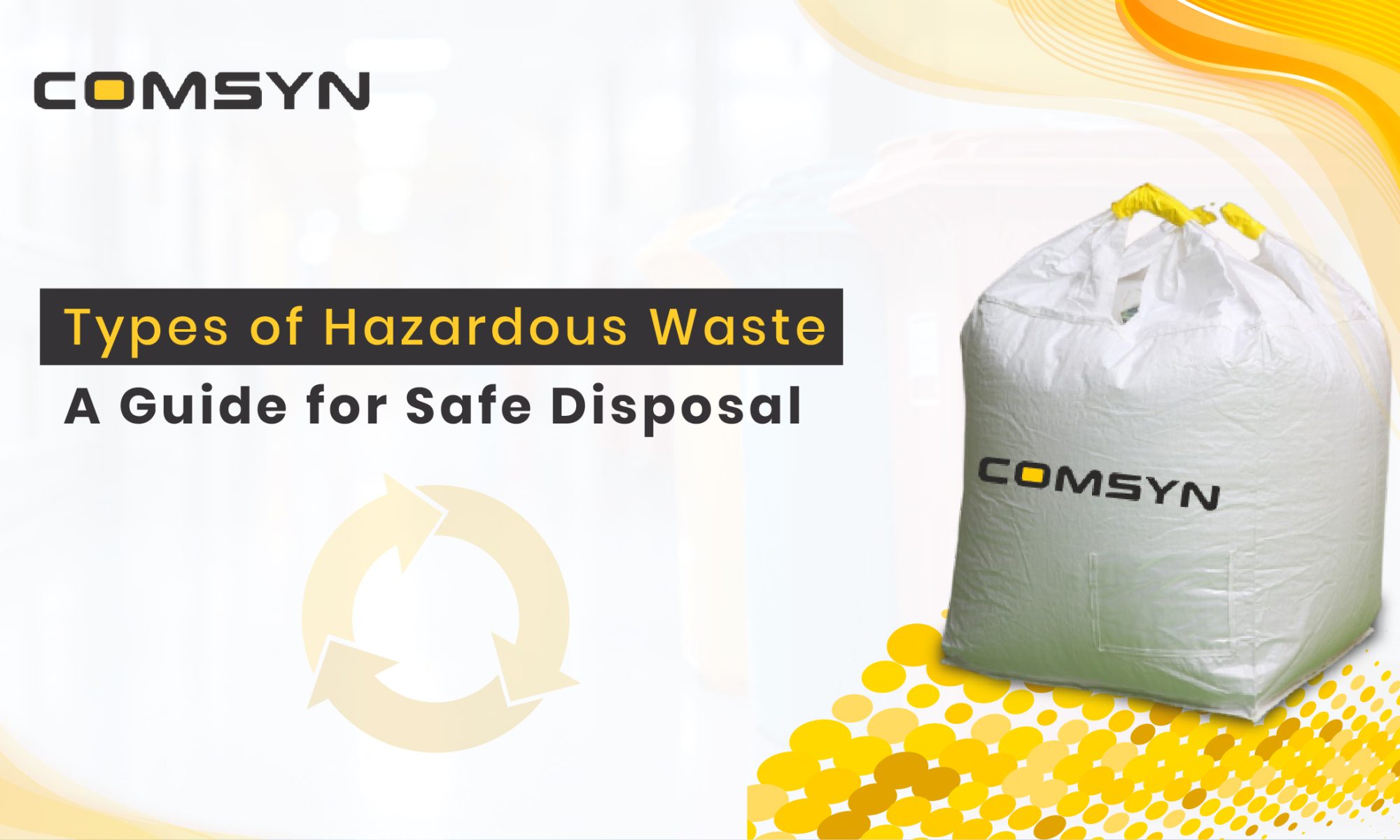With the rising trend of industrialization and scaling up of production, it becomes crucial to deal with hazardous waste. This guide illustrates what hazardous waste is, what types of hazardous waste are available, and how they can be safely disposed of. Hazardous waste is described broadly as material that threatens human health and the environment. It can emanate from industrial, commercial, farming, or even from domestic uses. Waste management is crucial in limiting the level of contamination of the environment and the overall well-being of human beings. There are institutions like the US EPA that classify waste types and regulate streams of their management to prevent developed countries from serving as the world’s dump sites. Comsyn is licensed to operate within these regulations when given congressional authorization to provide these services for the management of different hazardous wastes. When the rules are properly understood and complied with, the chances of causative factors of waste being deployed to the wrong places are diminished greatly. Each given hazardous waste has a specific target characteristic that it can potentially risk. The major types include: Hazardous waste is classified based on its source and nature, which helps determine the appropriate disposal method. 1. Listed Wastes 2. Characteristic Wastes: These include wastes that are ignitable, corrosive, reactive, or toxic, as discussed above. 3. Universal Wastes: Batteries, pesticides, equipment, and bulbs that might contain mercury, are referred to as universal waste. They are produced in mass and management for their disposal needs to be focused. 4. Mixed Wastes: Mixed wastes are those that contain both hazardous and radioactive wastes and have to be disposed of in a more complex way that could ensure proper containment of both dangers. Understanding hazardous waste is easier with specific examples: Identifying hazardous waste involves recognizing visual, chemical, and material indicators. Look for: Comsyn uses advanced detection methods to ensure accurate identification of hazardous waste, ensuring safe and compliant disposal. Effective hazardous waste management involves several key steps: Comsyn offers end-to-end waste management services, ensuring hazardous waste is stored, transported, and disposed of in compliance with regulations. Understanding the different types of hazardous waste is critical to protecting public health and the environment. From ignitable to toxic waste, each type poses unique threats that require careful handling and disposal. By partnering with experts like Comsyn, businesses can ensure responsible hazardous waste management, contributing to a safer and cleaner environment. 1. What are the 4 S’s of waste management? Sort, Segregate, Store, and Secure Disposal. 2. What type of waste is hazardous and why? Hazardous waste includes toxic, flammable, reactive, and corrosive materials that pose risks to health and the environment. 3. What is the most hazardous waste? Toxic chemicals like mercury, lead, and radioactive materials are among the most hazardous wastes. 4. Why is it called hazardous waste? It’s called hazardous waste because it can harm humans, animals, or the environment through toxicity, reactivity, flammability, or corrosiveness.Types of Hazardous Waste: A Guide for Safe Disposal

The inappropriate disposal of hazardous waste has serious repercussions for both human health and the environment. Thus, it is vital to recognize the various forms of hazardous waste so that it is possible to ensure correct disposal without violating environmental laws. Companies such as Comsyn focus on waste management by offering constructive ways of dealing with hazardous materials and other wastes.What Is Hazardous Waste?
Characteristics of Hazardous Waste
Classifications of Hazardous Waste
Examples of Hazardous Waste
How to Identify Hazardous Waste?
Managing Hazardous Waste Safely
Conclusion
FAQs
- About Us
- Products
- Markets Served
-
- Investor Relation
- Board Of Directors
- Committees Of Board
- Corporate Governance
- Financials
- Annual Report
- Key Managerial Positions
- Shareholding Pattern
- Notices
- Policies Programme
- Announcements
- Statement of Investor Complaints
- Unpaid & Unclaimed Dividend
- Prospectus
- Investors Contact
- Subsidiary Financials
- IEPF
- Preferential Issue – 2024
- MOA & AOA
- Integrated Filing
- Sustainability
- Contact Us
- TechTex
- Brochure

